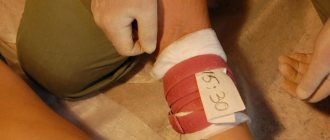General information
It is no secret that jellyfish are predators and are capable of stinging. Their tentacles are equipped with a special type of stinging cells - cnidocytes , which they need to hunt various prey, as well as to protect themselves from enemies.
The main food of these mobile hydroforms of cnidarians is zooplankton, incl. larvae, eggs and small fish representatives. Jellyfish, even weighing more than a hundredweight, are not able to withstand the sea current, therefore they are classified as plankton. Their type of movement is reactive - thanks to the contractions of the muscles of the walls of the umbrella, they are not capable of attacking a person.
The structure of a jellyfish
Involuntary contact with the smooth gelatinous parts is not dangerous to the health and integrity of the skin, while the stinging tentacles pose a real threat. There are several types:
- penetrants - are pointed threads that can be injected into the victim’s body for subsequent injection of burning toxic substances;
- glutinants - threads of a fairly long length with a sticky coating, their function is to stick to and immobilize the victim;
- volvents - have the appearance of short threads that are also capable of entangling the victim.
ICD-10 code: X26 Contact with poisonous marine animals and plants.
Pathogenesis
Only some species of box jellyfish, scyphojellyfish and hydromedusas can cause serious injuries to humans, although it is generally accepted that all adult individuals of the medusoid generation are distinguished by a developed structure of stinging tentacles that contain poisons. Even after the death of an individual, the poison remains toxic for some time, so playing with cornmouths washed ashore can also trigger a number of dangerous pathological reactions.
Zootoxins present in stinging cells are biologically active substances that can actively interact with biological structures; they are alkaloids , histamines , various enzymes and their inhibitors .
Classification
Depending on the effect of zootoxin, different jellyfish stings are distinguished:
- neurotoxic – having an effect on the nervous system;
- cytotoxic (dermatonecrotic) – cause local damage to cells and tissues;
- cardiotoxic – disrupting and paralyzing the functioning of the heart;
- hemolytic - destroys red blood cells - erythrocytes .
According to the severity of the jellyfish burn, it can be:
- mild (symptoms appear briefly and fragmentarily);
- average ( toxicosis has periods of exacerbation);
- severe (signs of intoxication are more pronounced and can last from several hours to a whole day).
Symptoms and signs
The difference between the bite of certain types of individuals is the slowly manifesting symptoms. Initial signs can develop an hour after the bite. During this period, the maximum concentration of poison in the bloodstream occurs. Until this period of time, the victim does not suspect that he was bitten by a jellyfish.
In order not to waste time and start treating the wound immediately, you need to have an idea of what a jellyfish sting looks like. The external symptoms of a burn appear the same, but have different intensities.
- Redness in the bitten area.
- Rashes.
- Blisters filling with fluid.
- Formation of bruises.
redness at the site of the bite
If the stinging sea creature is mildly venomous, then the symptoms of the bite will be of minor sensitivity.
When an ocean jellyfish stings, a person faces:
- with unbearable itching, burning;
- acute pain;
- loss of reason is possible.
Poison from dangerous individuals can lead to the appearance of multiple scars, ulcers, and ulcers on the body. Once in the epithelium, the toxin will slowly provoke allergies in relation to other systems. So, the victim is faced with the following signs:
- nausea;
- dizziness;
- vomiting;
- muscle spasms, cramps;
- paralysis of the diaphragm;
- arrhythmia and increased blood pressure;
- trouble breathing;
- intestinal disorder;
- sweating;
- malaise.
In serious situations, a stung jellyfish may cause anaphylactic shock, coma, or death of the victim. If pain does not go away or symptoms increase, an urgent visit to a doctor is necessary. Children and the elderly are especially at risk if they are stung by sea creatures.
seeing a doctor
Causes
The cause of pathological processes as a result of bites (more correctly, injections) of jellyfish are the zootoxins contained in their stinging tentacles. The most famous among them:
- neurotropic poison of the cross;
- nerve poison of physalia (intoxication is accompanied by severe pain, suffocation, convulsions and disappears after 1.5-2 hours);
- sea wasp venom, which can instantly paralyze the heart muscle, also has hemolytic and dermatonecrotic effects;
- the venom of chryazora or sea nettle consists of various enzymes, prostaglandins , histamine , serotonin , kinin-like substances and proteins with lethal cardiotoxic, hemolytic and dermatonecrotic effects;
- The poison of the Black Sea and Azov aurelias and cornerotes - although not deadly, poses a threat to the lives of children, allergy sufferers, for people with heart problems; if it comes into contact with mucous membranes (for example, the eyes), it can cause strong inflammatory reactions.
Symptoms
The symptoms of a jellyfish sting, or more correctly, an injection, are similar in different species and usually develop rapidly. Typically, patients experience a skin irritant and general toxic effect:
- local development of swelling and redness;
- increasing burning pain;
- fever;
- chills;
- increased sweating;
- convulsions;
- allergic reactions;
- papular dermatitis - the skin may become covered with a large number of blisters and resemble a nettle burn;
- , painful shock may begin .
Manifestations of general intoxication can also be expressed in the form of disturbances in the gastrointestinal tract (nausea, vomiting, diarrhea), even if the burn is superficial and the poison does not enter the body. If zootoxin has a neurotoxic effect, then a person may experience hallucinations, delirium, drowsiness or agitation, disorientation , etc.
The condition may be more severe and the symptoms more pronounced if a person has been in contact with the jellyfish for a long time or has been attacked by several individuals.
Important! There are known cases when a jellyfish burn resulted in death, for example, the Wasp Jellyfish living near the Australian coast is deadly; death from its bite occurs literally after a few minutes.
The most dangerous jellyfish in the world is the wasp.
Cross jellyfish sting
As a result of contact with the actively poisonous jellyfish, the cross jellyfish, a person experiences disruption of the activity of all body systems: the action of the poison is aimed at blocking the H-cholinoreactive systems of neuromuscular synapses and parasympathetic ganglia, and also gives a histamine-liberatory effect.
Cross Medusa
The first precedent of a spider bite is considered not life-threatening, the second is fraught with consequences due to the development of anaphylaxis , and the third is even fatal.
The clinical picture of the effects of neurotropic poison occurs within 15-20 minutes and includes:
- increased body temperature;
- adynamia and drop in muscle tone;
- pain in the limbs and lower back;
- disturbances of consciousness, incl. hallucinations, delusions;
- disturbances in the functioning of the respiratory and cardiac systems, which have signs of suffocation ;
- short-term loss of hearing and vision;
- death is possible.
Symptoms of a jellyfish sting
The peculiarity of the effects of hydroid toxins is the slow development of symptoms. Often visible traces of burns appear on the body only after 40-60 minutes. During this time, the concentration of jellyfish venom becomes maximum. At the site of contact with the stinging threads, red spots remain that do not go away for a long time. The skin begins to itch and become covered with blisters and blisters. In addition to these signs of a burn, allergic rashes appear and swelling develops.
If the burn is caused by dangerous varieties of hydroids, additional signs appear:
- convulsions;
- high body temperature;
- neurological pain;
- tachycardia;
- nausea;
- dizziness.
Important!
In people prone to allergies, after contact with hydroids, breathing becomes difficult, sweat appears, and blood pressure increases. In severe cases, suffocation and other signs of anaphylactic shock develop.
Procedures and operations
An important procedure after a jellyfish sting is to remove all remnants and parts of the hydroid's tentacles. You can do this yourself, preferably immediately. To do this, it is best to use a dry, hard towel, a credit card, but under no circumstances sharp objects!
It is enough to perform smooth scraping movements without injuring other integuments and without touching the burn site with your hands or other bare parts of the body.
Removing goads with a credit card
First aid, what to do after a jellyfish sting
Most jellyfish stings cause nothing more than discomfort and do not require medical attention. But if you observe a severe allergic reaction in yourself or another victim, the rash has spread over a large area of the body, or the bite was caused by a particularly poisonous individual, then minutes of delay may end badly. It is important to know what a jellyfish burn looks like in order to immediately begin therapeutic measures. First aid for a jellyfish sting is as follows:
- You need to get out of the water carefully and slowly. Panic and sudden movements will accelerate the absorption of toxic substances into the blood;
- remove remnants of tentacles from the skin. The stinging cells remaining in the body can introduce an additional portion of toxic substances into you and worsen the situation. They are removed using a plastic card, the blunt part of a knife, a nail file or other suitable object. It is strictly forbidden to take them with your bare hands. Carefully lift the tentacles and remove them from the surface of the body;
- Rinse the area of the jellyfish burn well with salted sea water or a prepared saline solution. Shaving foam treatment is also suitable. Such methods stop the spread of poison. What to do if a jellyfish stings your eye? Rinse it immediately under running water in large quantities. The mucous membranes are especially sensitive to toxic substances;
- Ice applied to the affected area will reduce pain and relieve swelling. If the pain is burning, you can use antihistamines and painkillers;
- A gauze compress soaked in ammonia or apple cider vinegar will help remove toxins. If there are none, you can use vegetable oil or sugar syrup;
- drink as much water as possible. The liquid will help quickly flush out toxins from the body.
Do not forget to drink as much water as possible after a jellyfish sting.
After providing first aid for a jellyfish sting, you should take a horizontal position in the shade and move less. Even if the first therapeutic measures lead to relief of the condition, it is not recommended to refuse medical help. The lull in symptoms may return with renewed vigor. This is especially true when toxins get into the eyes, mouth and other mucous membranes.
The strength of the poison depends on the type of coelenterate animal. Black Sea jellyfish stings can be painful, especially if the lesion is extensive, but not fatal.
Tropical representatives can cause fatal burns. The stings of the jellyfish found in Vietnam can be very strong and fatal.
The proposed instructions give a clear description of what to do if you are stung by a jellyfish.
| Action | Description |
| To prevent the possibility of a bite when meeting a jellyfish, you need to calmly leave the water on the shore. Fright and hysteria increase the speed of blood circulation and enhance the absorption of toxic substances | |
| The bite site should be washed well with sea water or just salt water, or shaving foam. These methods reduce the spread of poison. If poison gets into your eyes, you need to rinse them with plenty of (preferably running) tap water. | |
| Use the blunt part of a knife, a towel, a nail file or a plastic card to lift the remaining tentacles and carefully remove them from the affected area of skin | |
| To reduce swelling and pain, apply a piece of ice to the affected area when bitten. | |
| Take a tablet of ketanov, ibuprofen or other available analgesic | |
| If there is a possibility of an allergic reaction, take a tablet of Diazolin, Suprastin or any other antihistamine | |
| Drinking plenty of clean water leads to the rapid removal of toxins from the body | |
| Burns from jellyfish stings suffered by children, the elderly, or people with allergies are more severe, so such patients need to go to a medical facility for special care. After examination, the attending physician will prescribe the necessary treatment. Severe burns may require hospital treatment |
When going on a sea holiday, ask your tour operator what dangers may await you in the water, what is best to take with you in your first aid kit, how to behave if you are stung by a jellyfish, and where to go for medical help.











